Discover Free Interactive Reading Resources for Kids

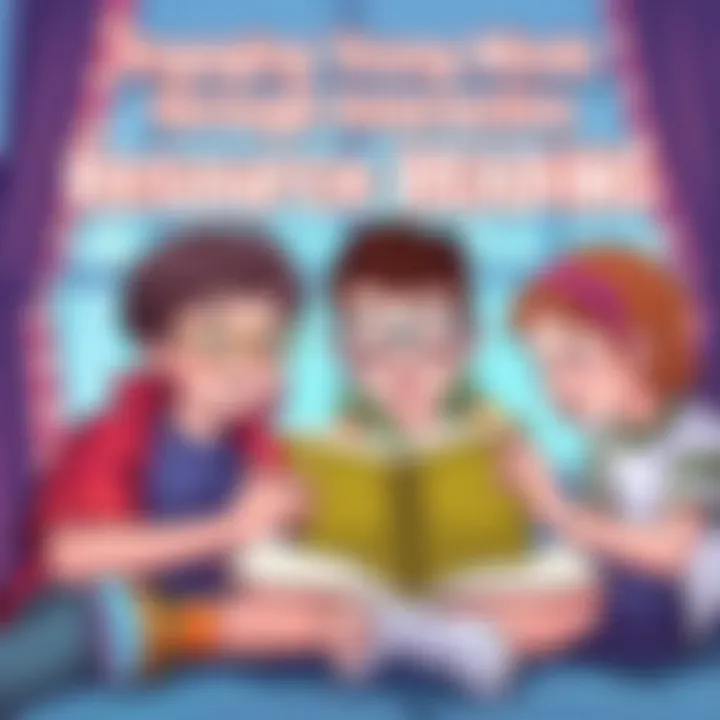
Intro
In today’s digital age, the way children learn and engage with reading has undergone a transformation. With vibrant colors, interactive elements, and narratives that spark curiosity, online reading resources have made themselves indispensable. Understanding the availability of free online books that not only entertain but also foster literacy skills represents a crucial step for parents and caregivers dedicated to nurturing young minds. This article delves into the world of interactive reading specifically tailored for elementary learners. We will shine a light on various platforms that offer free access, demonstrate the many types of interactive books available, and discuss the educational benefits they provide.
At the heart of this exploration lies a fundamental question: How can reading adapt to the ever-evolving needs of young learners? As we navigate this landscape, it becomes clear that the combination of engaging content and innovative formats can significantly enhance both interest and comprehension. The goal is to equip not just kids, but also their families, educators, and anyone involved in elementary education, with the tools to make reading a captivating adventure.
Let's dive into the myriad of creative activities that can complement interactive reading, providing a deeper engagement for young learners.
Understanding Interactive Reading
Interactive reading is a concept that has gained traction in the educational landscape. It incorporates various elements to make the reading experience more engaging and effective, particularly for young learners. This approach isn’t merely about reading words on a page; it’s about bringing stories and ideas to life through various media and active participation.
Definition and Importance
At its core, interactive reading refers to a reading method where readers are actively involved in the learning process. This can be achieved through questions, discussions, multimedia elements, or even physical activities connected to the content.
- Definition: Interactive reading engages children by integrating activities, such as answering questions about the text, drawing connections to personal experiences, or even acting out parts of the story. The goal is to move beyond passive reading; children are invited to explore not only the narrative but also its underlying themes and ideas.
The importance of interactive reading cannot be overstated. It helps young learners develop key literacy skills, like vocabulary, comprehension, and critical thinking. It also fosters a love of reading by turning it into an adventure rather than a chore. Young children benefit significantly from such practices as they help in retaining information better than traditional methods. When kids feel involved, they are likely to remember more about what they've read.
The Role of Interactivity in Learning
Interactivity plays a crucial role in enhancing the learning experience. When kids can interact with the text and its themes, they take ownership of their learning. Here’s how interactivity impacts their educational journey:
- Active Participation: Kids aren’t just passive observers; they engage with the content through questions and discussions. This active participation solidifies their understanding and helps develop critical thinking skills.
- Social Connections: Interactive reading often involves group activities or discussions, which build social skills. Children learn to articulate their thoughts and appreciate diverse perspectives, fostering community spirit.
- Motivation and Enthusiasm: The more interactive the reading experience, the more likely children are to be motivated. Whether it's a colorful app designed to make stories come alive or books that require physical engagement, children approach these learning tools with excitement.
In fact, it's often said that "learning to read is not enough; reading to learn is what matters," suggesting that how a child approaches reading can significantly affect how well they absorb information. By focusing on interactive methods, educators and caregivers can create an environment that nurtures enthusiastic, curious readers who are prepared for future academic challenges.
Benefits of Online Reading for Children
The advantages of online reading for children are manifold, bringing an array of benefits that are crucial in today’s tech-driven world. Amidst the growing digital landscape, it’s imperative to explore how these online resources can bolster literacy and foster a love for reading in the young minds of elementary learners. Digital platforms create a bridge between traditional content and interactive experiences, making learning both engaging and accessible.
Enhanced Engagement and Focus
When kids engage with online reading materials, there's a noticeable spike in motivation and attention. Unlike their printed counterparts, interactive eBooks often include audiovisual elements; animations can bring a story to life in ways that a mere page cannot. This multimedia approach tends to captivate young readers, drawing them into narratives.
Consider a child reading a story about jungle adventures. An online book might include sounds of chirping birds, rustling leaves, or even the roar of a lion. Such sensory cues can heighten their focus, keeping youngsters glued to their screens, eager to explore each turn of the page. When integrated properly, these elements don't just serve entertainment; they also stimulate curiosity and spark discussions about the content.
Ultimately, effective engagement leads to longer reading sessions which are essential for building comprehension skills.
Creative Learning Approaches
Interactive reading fosters innovative methods of learning that traditional books may not achieve. With themed games and quizzes embedded within the narrative, children can test their understanding as they read. This turns the reading experience into an adventure of discovery rather than a passive absorption of text. By solving puzzles related to the storyline, for example, they employ critical thinking and retention tactics that are beneficial for cognitive development.
In addition, platforms such as Starfall and Epic! offer varied genres and styles to cater to different interests—whether it’s an interactive fairy tale or a gritty adventure story, kids can find material that resonates with them. Such engaging options encourage them to delve deeper into genres they may not have considered otherwise.
Improvement in Reading Skills
Finally, the impact of online reading on literacy skills is profound. The instant feedback mechanisms available on many platforms enable children to learn at their own pace. If they stumble upon a word or phrase, they can often click for explanations or listen to pronunciations, enhancing their vocabulary without feeling lost or frustrated.
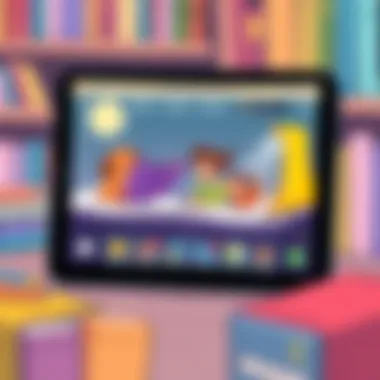
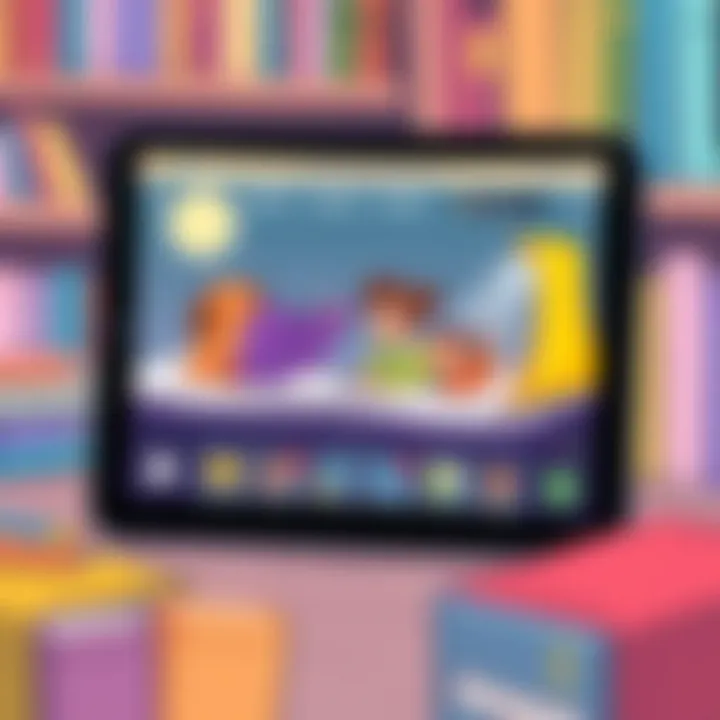
Furthermore, these digital resources often track progress. Parents and educators can monitor how much time is spent reading and the types of books that grab their attention, which is key to tailoring educational approaches.
His feedback can inform strategies that both challenge and motivate children, ensuring a holistic approach to reading development. It’s worth noting that consistent exposure to reading while utilizing these interactive platforms leads to noticeable improvements in fluency and comprehension levels.
Reading is not just a skill; it's a door to adventure and discovery.
In sum, online reading provides children not only with ample material to choose from but also enhances their focus, stimulates creative thinking, and significantly improves their reading skills. As such, it stands as a pivotal resource in the modern educational landscape.
Free Resources for Interactive Reading
In a world that is increasingly leaning toward digital interactivity, the importance of free resources for interactive reading cannot be overstated. For elementary school children, access to engaging books that provide a dynamic reading experience is crucial. These resources not only enhance literacy skills but also foster a love for reading at an early age. Parents and educators alike can benefit from recognizing the wealth of free interactive materials available online.
Free resources serve many purposes, from promoting comprehension to bolstering creativity. Young learners are more engaged when they can interact with the text, whether that’s through embedded animations or listening to audio narrations. The opportunities for immediate feedback and assessment also mean that both teachers and students can track progress more efficiently.
Moreover, these resources can be accessed anywhere there’s internet service, which breaks down barriers that may limit access to physical books. In a time when many families face budget constraints, the availability of free online books can be a game-changer for young learners.
Notable Online Platforms
Overview of Each Platform
When examining the notable online platforms dedicated to interactive reading, a few stand out due to their impact. Websites like Epic!, Storyline Online, and Open Library are pivotal in providing a wide range of materials tailored for children.
- Epic! offers a rich library with thousands of books that cater to various reading levels. Its key characteristic is the broad selection of genres, including fiction, non-fiction, and educational material, making it a favorite among parents and teachers alike.
- Storyline Online focuses on reading aloud, where actors read popular children’s books. This unique aspect not only captivates attention but helps develop listening skills, making it an appealing choice for those who learn better audibly.
- Open Library takes the cake for its mission to provide an open-access catalog of books. Its unique feature is that it offers a way to borrow texts for free, making classic literature accessible to young readers.
Each of these platforms offers unique advantages, but they also have disadvantages. For instance, while Epic! requires a subscription after a 30-day free trial, it is still widely respected for its educational value. Storyline Online might have a limited selection relative to other platforms.
User Experience and Accessibility
The user experience and accessibility of these platforms significantly impact how effectively children engage with interactive reading. Epic! has designed a visually appealing interface that is easy for children to navigate.
- The key characteristic of Epic!’s user interface is its child-friendly design, ensuring that kids can find books independently.
- On the other hand, Storyline Online is simple to use, directing users to a straightforward list of available books. However, it may lack some features that would enhance interaction, such as interactive elements within the chapters.
What's noteworthy is how these platforms ensure that users of all abilities can access the content. Accessibility features like text-to-speech and adjustable font sizes are growing in importance, making it easier for children with dyslexia or other learning challenges to engage with reading.
Types of Available Interactive Books
eBooks with multimedia features
Among the various types of interactive books available, eBooks with multimedia features stand out as particularly engaging for young learners. These eBooks often incorporate color, sound, and even animation to capture children’s attention and enhance comprehension.
- The advantage of multimedia eBooks is their ability to cater to diverse interests. Kids can switch between reading and listening, often resulting in a richer understanding of the material. A good example is the Speakaboos platform, where stories come to life with animations and songs, making learning delightful.
However, there can be downsides. Some children might find the multimedia aspects distracting, losing sight of the actual text and the practice of reading itself.
Interactive story apps
Interactive story apps constitute another avenue worth exploring for free reading resources. These apps engage children by allowing them to pick story paths or solve puzzles related to the narrative.
- A prominent example is Choose Your Own Adventure apps that let children make choices that affect the story's outcome. This interactive element fosters critical thinking and keeps kids invested in the narrative.
Despite their benefits, these apps can sometimes limit the depth of reading. Children are drawn to interact but might miss out on the traditional narrative structure, which can be fundamental for developing more advanced reading skills later on.
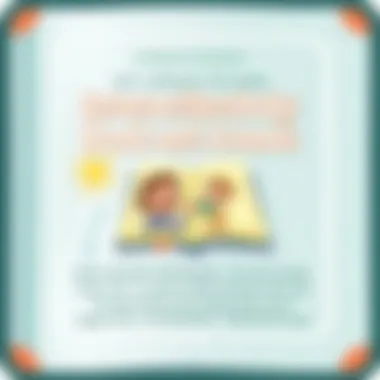
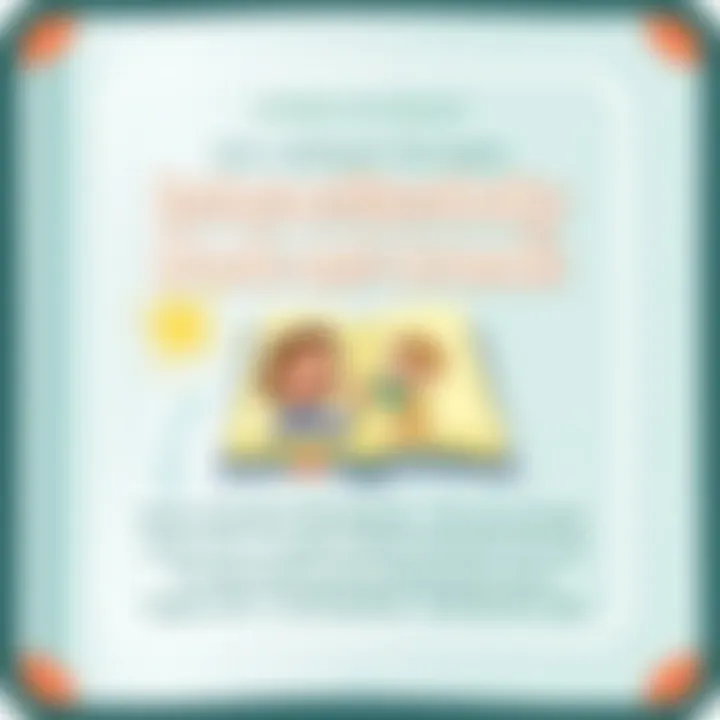
Overall, free resources for interactive reading provide a rich landscape for introducing elementary learners to the joys of literature. By embracing various online platforms and types of interactive books, parents and educators can illuminate paths to literacy that are engaging, effective, and available to all.
Features of Successful Interactive Reading Books
Interactive reading books play a pivotal role in promoting literacy among elementary learners. It's not just about reading words on a page; it’s about engaging with the text in ways that foster understanding, creativity, and retention. To maximize the benefits of interactive reading, certain key features should be included.
Multimedia Integration
Integrating multimedia elements into reading materials can greatly enhance a child’s learning experience. This can include audio narrations, animations, and visual stimuli. For instance, when a child reads a book about animals, hearing the sounds those animals make can provide a richer context. This multisensory approach helps to anchor learning in a way that is both memorable and enjoyable.
A good example is how platforms like Epic! or Storyline Online integrate voice actors to read stories aloud. The child can hear the enthusiasm in the voice, which draws them in deeper. Research suggests that when children are exposed to such features, their understanding improves, and they tend to be more engaged overall.
"Multimedia elements do not only capture attention but also improve comprehension and recall, making learning more effective and fun."
Responsive Design for Multiple Devices
In today’s world, children access content through a variety of devices, from tablets to smartphones. A successful interactive reading book must be designed with this diversity in mind. Responsive design ensures that the material adjusts based on the screen size, providing a consistent experience, whether on a tablet or a computer.
Consider a scenario where a child starts reading on a tablet during a car ride and then switches to a laptop at home. If the content is responsive, the text and images will resize appropriately, preventing frustration. This flexibility is especially important in a family setting where sharing a single resource among several devices is common.
Catering to Different Learning Styles
Every child learns differently. Some are visual learners, while others grasp concepts better through auditory methods or kinesthetic activities. Effective interactive reading books should cater to these various learning styles by incorporating different techniques and features.
For visual learners, colorful illustrations and infographics can illustrate key points. Auditory learners may benefit from read-along features or songs that reinforce concepts. Kinesthetic learners could engage with interactive elements such as quizzes or games linked to the reading material.
Offering a variety of engagements not only widens the appeal but also ensures that every child can find a way to relate to the text. Ultimately, books that consider different learning preferences lead to better comprehension and greater enthusiasm for reading.
Navigating the Digital Landscape of Children's Literature
In the ever-evolving world of technology, children today have access to more information and resources than any generation before them. Navigating the digital landscape of children's literature is vital for both young readers and their parents. This section highlights the balance between the vast availability of content and the necessity for safety and age-appropriateness in ensuring a positive reading experience.
Safety Considerations for Online Reading
When kids dive into the digital world, one primary concern is safety. As much as libraries are welcoming spaces, the internet can sometimes feel like a wild frontier. Parents and caregivers need to keep a keen eye on the types of content their children engage with. Consider these safety measures:
- Use Reputable Platforms: Stick to well-known websites that are recognized for children's literature, like Scholastic.com or National Geographic Kids. These sites provide vetted content that is suitable for young minds.
- Parental Controls: Many devices offer built-in parental controls. These can help limit access to certain types of content and ensure kids stay on the straight and narrow.
- Supervised Browsing: It's a good idea for adults to sit with children while they explore digital books. This joint reading time helps kids feel supported and allows parents to guide discussions about what they are reading.
"Reading is a passport to countless adventures."
By ensuring the digital reading environment is safe, parents can allow their children to engage with exciting literature without worry.
Finding Age-Appropriate Content
In the realm of children's literature, age-appropriateness is critical. Not every book that looks colorful or sounds fun is suitable for every age group. Here's how to ensure that the content aligns with your child's reading level and interests:
- Check Recommended Ages: Each digital platform typically lists an age range for their books. Utilize this feature to filter through options.
- Read Reviews: Websites like Common Sense Media provide insights into not only the educational value of a book, but also its suitability for various age groups. Parent and teacher reviews can also be beneficial.
- Explore Genre Variety: Encourage kids to explore various genres that interest them. While some may be captivated by fantasy books featuring friendly dragons, others might enjoy nonfiction texts about ancient civilizations.
- Trial and Error: Sometimes, finding the right book is a bit of a treasure hunt. If a book doesn’t resonate with your child, don’t hesitate to try another one. The aim is to foster a love for reading.
Navigating the digital landscape of children’s literature can be an adventure in itself. By focusing on safety and ensuring content is age-appropriate, parents can create enriching reading environments that empower young readers. With these considerations in mind, kids can make the most of their digital literary journey.
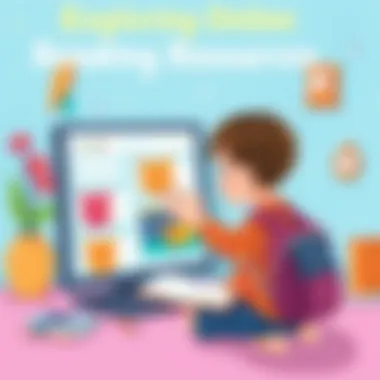
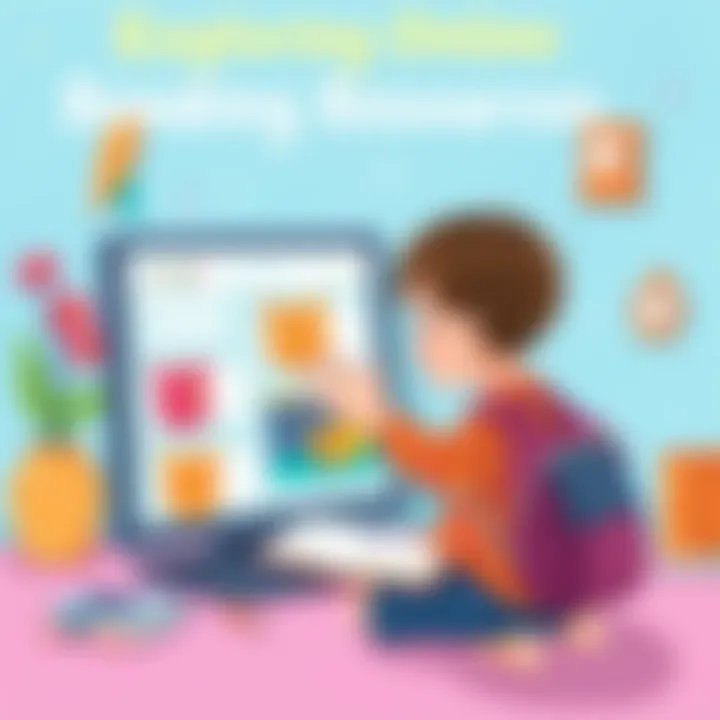
Feedback and Assessments in Interactive Reading
The realm of interactive reading comes with much to unpack, particularly when it comes to providing children with effective feedback and assessments. These elements are crucial not just for measuring progress but also for enhancing the reading experience itself. It's not simply about getting from page one to the last, but creating a culture of continuous learning where children feel supported and motivated.
Tracking Progress and Engagement
Keeping tabs on how well a child is interacting with the material is essential. This is where tracking becomes invaluable. Many online platforms integrate features that allow parents and educators to observe children’s reading habits.
- How long are they spending on each book?
- Are they returning to re-read certain sections?
- What types of stories capture their interest?
These metrics help in understanding engagement levels. For instance, a kid who keeps going back to their favorite story about brave knights might be developing a strong interest in fantasy themes. Noticing such patterns can guide parents in selecting future content that aligns with the child's interests, keeping them more engaged in the process.
Additionally, interactive reading often includes built-in quizzes or prompts. These features provide instant feedback not only to the child but also to the parent. When a child answers a question about a story's plot, it’s an opportunity to spot any misunderstandings and address them right away, fostering better comprehension.
"When feedback is immediate, it makes learning feel more dynamic and engaging, helping children associate reading with positive reinforcement."
Assessing Comprehension and Retention
Moving beyond just tracking, assessing comprehension is another layer that interactive reading offers. This involves not just whether the child can recognize words but their understanding of the narrative, themes, and characters. Online books often incorporate interactive elements like animations or choices that affect the storyline, compelling children to think critically about their choices.
Effective assessment might look like:
- Questions that prompt kids to talk about their favorite character and why they relate to them.
- Activities that ask children to summarize a story or predict what might happen next.
- Games embedded within the storylines that reinforce vocabulary understanding.
The beauty of interactive reading is that these assessments can be fun. Yet, they still hold a degree of seriousness. Retention becomes not just about what was read, but how it can be applied. When children learn to draw conclusions based on what they’ve absorbed, it solidifies their comprehension.
Equipping kids with tools to evaluate their own understanding fosters a mindset where reading is a journey of exploration rather than a chore. As they grow, the skills honed through these methods create a foundation for critical thinking and more complex literary analysis in the years to come.
The Future of Interactive Reading
As we look ahead, the landscape of interactive reading appears vibrant and promising, particularly for young learners. The significance of this topic lies in its ability to combine technology with literacy, creating a dynamic learning environment. In today's fast-paced world, children are increasingly drawn to screens, making it crucial to ensure that these devices enhance—not hinder—their reading experiences. Understanding the future of interactive reading helps parents, educators, and caretakers harness these advancements to ignite a love for books in children.
Emerging Technologies in Education
Technology is evolving at a breakneck speed, affecting all aspects of our lives, including education. For interactive reading specifically, emerging technologies are paving the way for more engaging and effective learning experiences. With tools like Augmented Reality (AR), Virtual Reality (VR), and enhanced AI-driven platforms, interactive reading is transforming from simple text on a screen to immersive experiences that captivate children’s imaginations.
For instance, consider AR applications that overlay information or animations on physical books. When a child holds a book up to a device, they could see characters come to life or animated graphics that enrich the narrative. This not only makes reading more exciting but also deepens understanding by allowing users to visualize concepts directly.
AI-driven platforms like Lexia and Raz-Kids adapt to each child's reading level, offering personalized reading suggestions and assessments. These advancements not only motivate young readers by providing content suited to their interests and abilities but also equip teachers and parents with valuable data to monitor progress.
Moreover, voice recognition technology is set to play a pivotal role in encouraging reading practice. Children can read aloud to these systems, receiving real-time feedback to improve pronunciation and fluency. The tech solutions all foster an environment that caters to diverse learning styles and promotes meaningful interaction, ultimately making the reading journey more effective.
The Ongoing Evolution of Children's Literature
As interactive formats gain traction, children's literature is evolving to reflect these changes. Authors and publishers are increasingly exploring how storytelling can navigate through various media, blending traditional narratives with interactive gameplay elements.
Modern children’s books often incorporate elements such as clickable story paths, where readers can choose different directions the story takes. This choose-your-own-adventure model not only encourages decision-making but also engenders a sense of agency among young readers. The narratives are no longer linear; they morph and adapt based on the choices made by the reader, enhancing critical thinking skills in the process.
Additionally, as cultural narratives are integrated into interactive books, children from diverse backgrounds can see their experiences reflected in the stories they read, fostering inclusivity and empathy. Publishers such as Scholastic and Scholastic Storybook Treasures have tapped into this growing demand, producing engaging titles that resonate with today’s diverse young audience.
The End
In summation, the future of interactive reading stands on the cusp of substantial change due to technological advancements and the evolving nature of children’s literature. As we integrate innovative methods to engage young learners, the importance of maintaining a balance between screen time and traditional reading cannot be overstated. By embracing these developments, parents and educators can enrich children's understanding and love of reading in ways that are both effective and fun.
"To learn to read is to light a fire; every syllable that is spelled out is a spark."
As the world of books continues to change, it is up to us to guide our children through this fire so they can find their path in the endless forest of stories.







